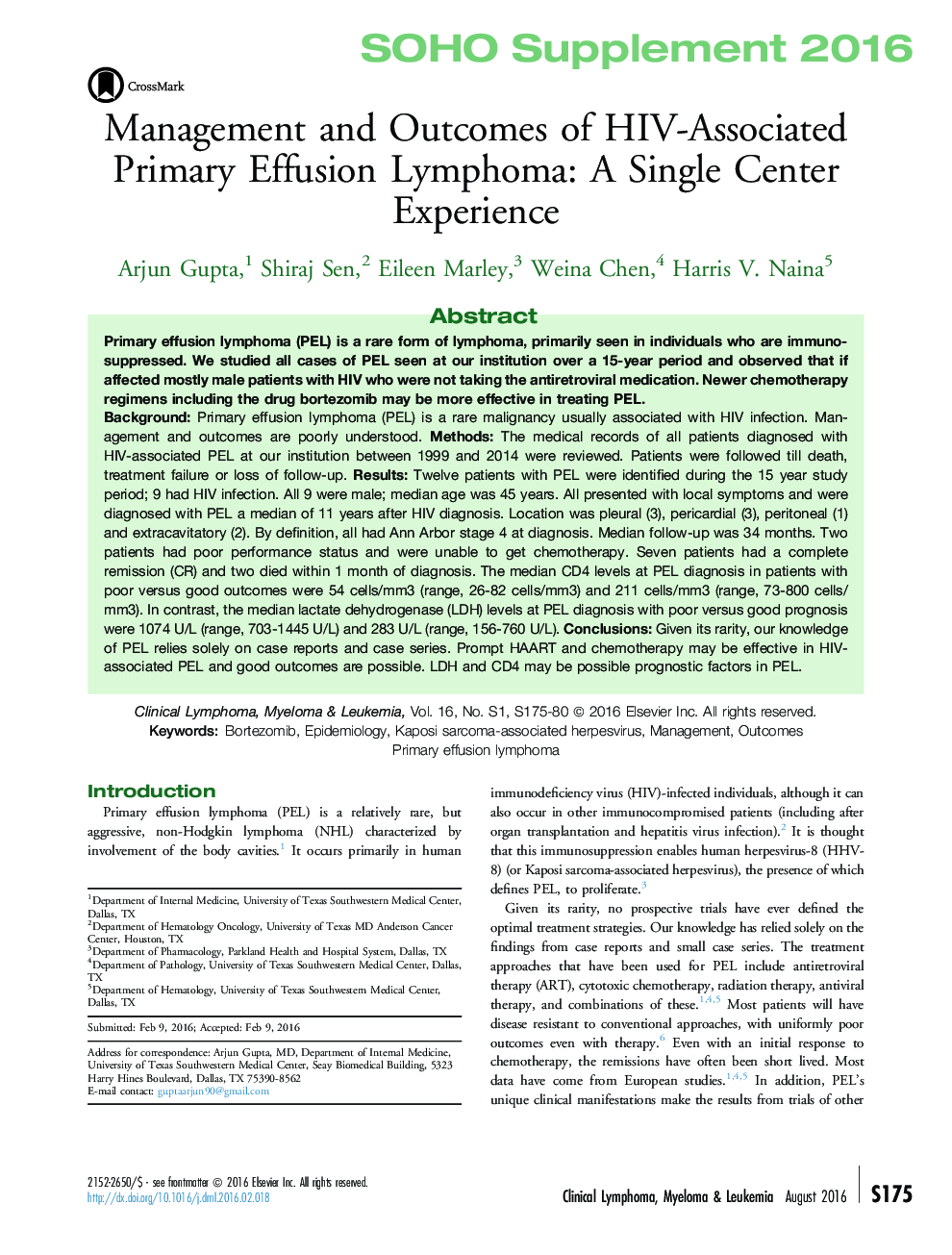| Article ID | Journal | Published Year | Pages | File Type |
|---|---|---|---|---|
| 2754426 | Clinical Lymphoma Myeloma and Leukemia | 2016 | 6 Pages |
BackgroundPrimary effusion lymphoma (PEL) is a rare malignancy usually associated with HIV infection. Management and outcomes are poorly understood.MethodsThe medical records of all patients diagnosed with HIV-associated PEL at our institution between 1999 and 2014 were reviewed. Patients were followed till death, treatment failure or loss of follow-up.ResultsTwelve patients with PEL were identified during the 15 year study period; 9 had HIV infection. All 9 were male; median age was 45 years. All presented with local symptoms and were diagnosed with PEL a median of 11 years after HIV diagnosis. Location was pleural (3), pericardial (3), peritoneal (1) and extracavitatory (2). By definition, all had Ann Arbor stage 4 at diagnosis. Median follow-up was 34 months. Two patients had poor performance status and were unable to get chemotherapy. Seven patients had a complete remission (CR) and two died within 1 month of diagnosis. The median CD4 levels at PEL diagnosis in patients with poor versus good outcomes were 54 cells/mm3 (range, 26-82 cells/mm3) and 211 cells/mm3 (range, 73-800 cells/mm3). In contrast, the median lactate dehydrogenase (LDH) levels at PEL diagnosis with poor versus good prognosis were 1074 U/L (range, 703-1445 U/L) and 283 U/L (range, 156-760 U/L).ConclusionsGiven its rarity, our knowledge of PEL relies solely on case reports and case series. Prompt HAART and chemotherapy may be effective in HIV- associated PEL and good outcomes are possible. LDH and CD4 may be possible prognostic factors in PEL.
